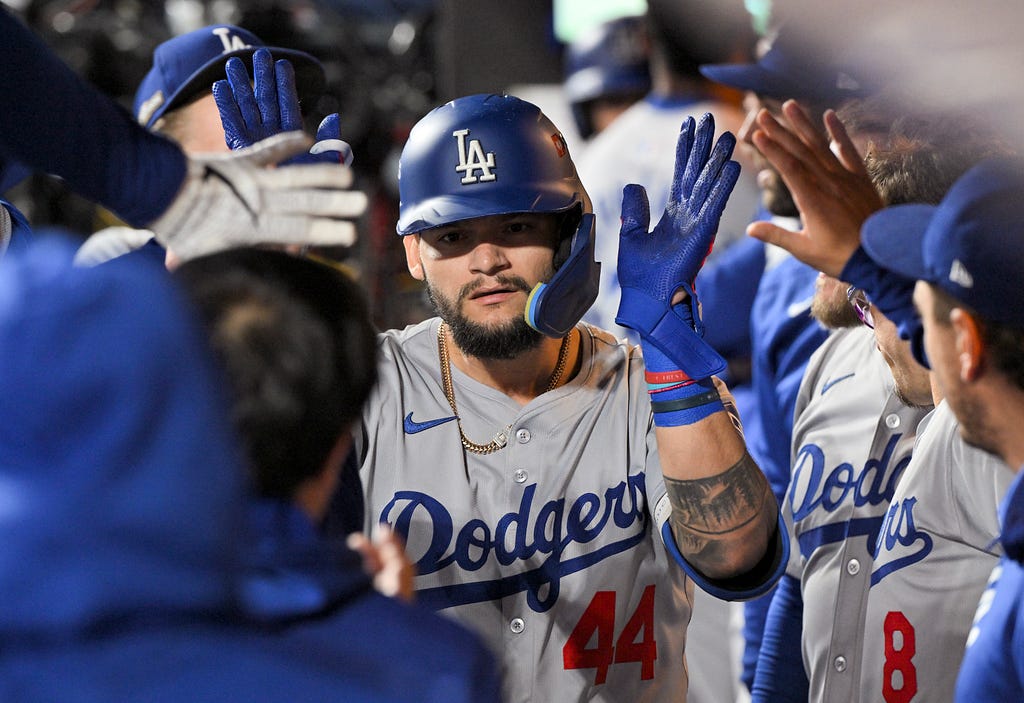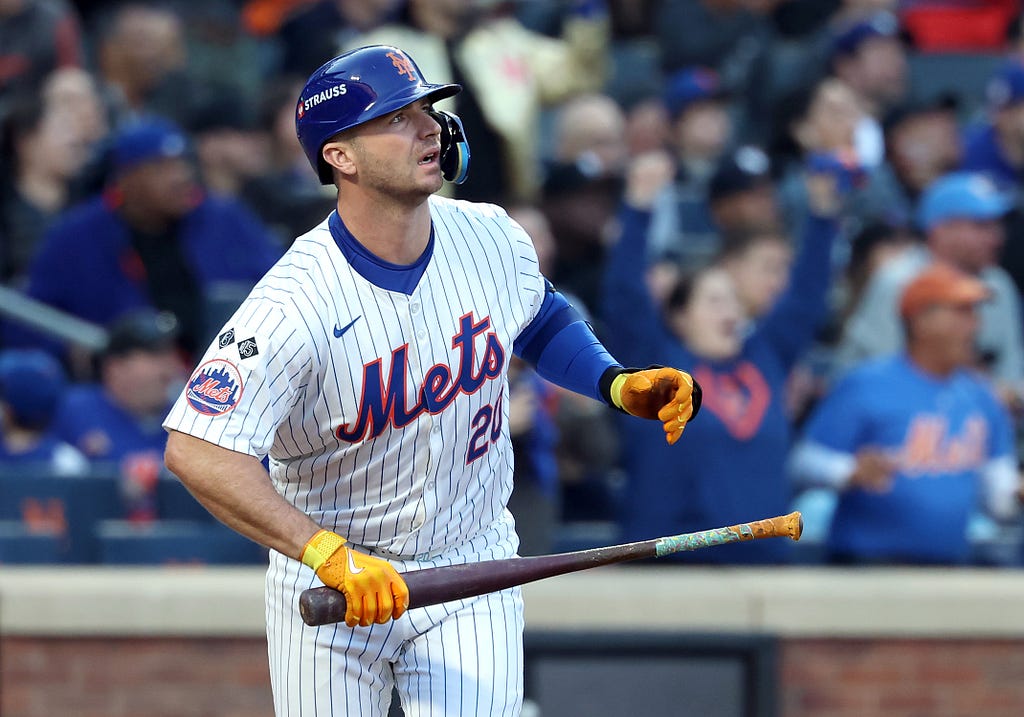
by Cary Osborne
With two star-studded teams (and two of the top National League MVP candidates playing — Shohei Ohtani and Francisco Lindor), there are plenty of potential impact performers for Game 6 of the National League Championship Series.
But there are some within the group of 52 players whose either recent trends or overall series significance put them in the spotlight of Sunday’s game. Here’s a look at three pieces from each team to watch.
Dodgers
Teoscar Hernández
The power-hitting left fielder is 0-for-18 in the NLCS. The saving grace for him are his seven walks. Two of those were against Game 6 starter Sean Manaea in Game 2.
Dodgers manager Dave Roberts explained that Hernández is struggling with the fastball, and he’s right. Hernández is 0-for-9 with 15 swings and miss against the fastball in this series. So the expectation is the left-hander Manaea goes there in Game 6.
Hernández slugged .600 against left-handed fastballs during the regular season and batted .327.
The larger sample size of the season says that Hernández is due.
Andy Pages
Who would have known the rookie center fielder would be in this spot? But Game 5 was a revelation to the baseball world when he hit two home runs.
Two key reasons Pages is mentioned here — he can hit lefties (.357 average in the regular season), and he can throw. He has three throws from center field this series — 99.0 mph (Mets sacrifice fly), 94.9 mph (runner didn’t advance from third base), 93.1 (runner didn’t advance from third base) and 92.3 (runner scored on a close play).
All four throws from center field were accurate to the catcher.
“He’s done a great job being able to get his first taste of postseason baseball, playing a big role. The bat, certainly. But the defense, he’s been really good out there defensively and the arm strength, the accuracy has saved a couple of runs actually,” said manager Dave Roberts. “So it’s been a deterrent to score runs from third base on a potential sac fly. But he’s done a great job. It’s been good, and excited to have him in there tonight as well.”
The Bullpen
The Dodgers are starting Michael Kopech in Game 6. The former White Sox starting pitcher reinvented himself in 2024 as a high-leverage reliever, particularly for the Dodgers after he was acquired at the trade deadline.
He’s the first link in the chain in the Dodgers’ bullpen game.
This one is different than NLCS Game 2, where the Dodgers’ plan was going with an opener then to rookie Landon Knack for bulk innings. This is more like Game 4 of the NLDS where the Dodgers used eight different pitchers to stitch together a shutout.
That game saw the Dodgers use all their high-leverage arms and then end with Knack with the Dodgers up 8–0.
Another difference here is the Dodgers don’t have left-hander Alex Vesia — who had excellent and neutral splits against lefties and righties this season. That means one or more of the leverage pieces will go longer than usual or the Dodgers will have someone outside of their leverage arms come in and take down some outs. That group is three rookies — Knack, Ben Casparius and Edgardo Henriquez.
Mets

Sean Manaea
Manaea has a 3.01 ERA and 0.87 WHIP over his last 15 starts , including three in the postseason. The 15 starts cover his season with his new arm slot — which has been compared to Chris Sale.
He’ll be facing a Dodger offense that scored 33 runs in the four games not pitched by him.
“I think the slot — you can have the same pitch mix but the characteristics are different,” Roberts said. “It’s more sweepy, which makes it tougher on the right-hand hitter coming in to you, versus more kind of 2 to 7 on the breaking ball. The fastball kind of has a little bit more rise than where it’s traditionally three-quarters. It’s just a different look, that the more familiar you get with it, the better you have a chance.”
Manaea allowed two runners to reach scoring position against him in 5 2/3 innings in Game 2. He also pitched with a 6–0 lead before throwing a pitch in the second inning.
“That was our first time seeing him with his new arm angle. And they jumped on us early,” said Kiké Hernández. “And I’m sure as a pitcher, the mentality is a little different when you have a six-run lead than when it’s a 0–0 game or close game. And kind of the same for the lineup. I feel like that day, we were trying to score a lot of runs with just one swing instead of doing the same thing we’ve done throughout this postseason, which is do your part and pass the baton and keep the line moving. And we’re hoping for a different outcome tonight.”
Pete Alonso
Alonso came alive in Game 5, like he did in Game 3 of Wild Card Series against the Brewers. Alonso was 1-for-8 in that series before hitting a three-run home run, swinging a 2–0 Brewers lead to a Mets 3–2 lead. The Mets eventually won that game 4–2.
His three-run homer jumpstarted the Mets against Jack Flaherty in the first inning of Game 5. Alonso has three hits in his last two games, compared to his lone single in his first 13 at-bats that started the series. His four home runs are tied with Mark Vientos for the team lead in the postseason.
Their Bullpen
Mets relievers outside of closer Edwin Díaz and Ryne Stanek have allowed 20 earned runs, 23 hits and 14 walks in 21 1/3 innings in this series.
So the Mets preference would be start with Manaea, set up with Stanek and end with Díaz, who has struck out five of the 13 batters he has faced in this series.
The Dodgers’ task then is to wear down Manaea early and force the Mets to go to the bullpen earlier.
NLCS Game 6: Six key pieces to watch was originally published in Dodger Insider on Medium, where people are continuing the conversation by highlighting and responding to this story.